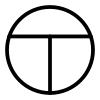Total sounding
Geotechnical investigation method

Total sounding (TS) is a sounding method performed as part of geotechnical investigation. The sounding combines conventional rotary-pressure sounding with bedrock drilling, including rotation, ramming and flushing modes. The result indicates sediment stratification, occasionally soil type and may verify depth to bedrock.[1]
History
The rotary-pressure sounding method was developed by the Norwegian Geotechnical Institute (NGI) and the Public Roads Administration (NPRA) in 1967.[2]
References
External links
- v
- t
- e
Geotechnical engineering
Offshore geotechnical engineering
and
instrumentation
| Field (in situ) |
|
|---|---|
| Laboratory testing |
| Types | |
|---|---|
| Properties |
|
(Interaction)
| Natural features | |
|---|---|
| Earthworks |
|
| Foundations |
| Forces | |
|---|---|
| Phenomena/ problems |
|
software
 | This article about a civil engineering topic is a stub. You can help Wikipedia by expanding it. |
- v
- t
- e





























